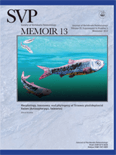
JOURNAL OF VERTEBRATE PALEONTOLOGY
Scope & Guideline
Pioneering Discoveries in Vertebrate Paleontology
Introduction
Aims and Scopes
- Taxonomic and Phylogenetic Studies:
The journal frequently publishes research on the taxonomy and phylogenetic relationships of various vertebrate groups, detailing new species descriptions and revisions of existing taxa, which enhance our understanding of vertebrate diversity through time. - Paleoecology and Biogeography:
Many papers aim to reconstruct ancient ecosystems and biogeographic patterns by analyzing fossil assemblages, providing insights into the ecological interactions and distribution of vertebrate species in different geological periods. - Functional Morphology and Biomechanics:
Research often includes biomechanical analyses of skeletal structures and functional morphology, employing techniques such as finite element analysis to understand the adaptations and behaviors of extinct vertebrates. - Taphonomy and Fossil Preservation:
The journal also addresses the processes of fossilization and the factors affecting the preservation of vertebrate remains, contributing to the understanding of how fossils are formed and what biases may exist in the fossil record. - Innovative Methodologies:
Utilizing advanced techniques such as CT scanning, geochemical analysis, and machine learning for taxonomic identification, the journal embraces modern methodologies that enhance the study of vertebrate fossils.
Trending and Emerging
- Dinosaur Diversity and Evolution:
A significant increase in research related to the diversity, morphology, and evolutionary history of dinosaurs, particularly theropods and ornithopods, has been observed, reflecting the continued fascination and importance of dinosaurs in paleontological research. - Pterosaur Research:
There is a notable trend in the publication of studies on pterosaurs, focusing on their morphology, flight capabilities, and evolutionary relationships, indicating a resurgence of interest in these flying reptiles. - Paleoecological Studies:
Emerging themes in paleoecology are increasingly prevalent, with studies examining the interactions between different vertebrate species and their environments, particularly in the context of climate change and habitat shifts over geological time. - Technological Innovations in Paleontology:
The integration of advanced imaging techniques, such as 3D reconstruction and CT scanning, is becoming more common, enhancing the analysis of fossil specimens and providing new insights into vertebrate morphology and evolution. - Geochemical Analysis of Fossils:
An uptick in studies utilizing geochemical methodologies to understand the preservation and diagenesis of vertebrate fossils reflects a growing interest in the chemical aspects of fossilization and its implications for paleobiology.
Declining or Waning
- Paleoanthropology:
The journal has published fewer studies specifically focused on the evolutionary history of early hominins and their relatives, indicating a possible shift in focus towards other vertebrate groups and their evolutionary narratives. - Amphibian and Reptile Fossils:
Research related to certain groups of amphibians and reptiles has diminished, particularly those that are less well-known or less diverse in the fossil record, suggesting a move towards more prominent or well-studied taxa. - Fossil Fish Studies:
There has been a noticeable decline in papers dedicated specifically to the study of fossil fishes, particularly those that do not contribute to broader evolutionary narratives, as attention shifts to more diverse vertebrate groups. - Extinct Marine Mammals:
Research focused on the evolutionary history of certain extinct marine mammals has decreased, possibly due to the increasing focus on terrestrial vertebrates and their evolutionary implications.
Similar Journals
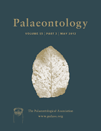
PALAEONTOLOGY
Bridging Science and History: The Essence of PaleontologyPALAEONTOLOGY, published by Wiley in the United Kingdom, is a leading journal dedicated to advancing the knowledge of Earth's biological history through the study of fossilized remains. With an ISSN of 0031-0239 and an E-ISSN of 1475-4983, this journal has established itself as a premier resource in the field, boasting a remarkable Q1 ranking in both Paleontology and Ecology, Evolution, Behavior and Systematics according to the 2023 category quartiles. Its commitment to high-quality research is evidenced by its Scopus rankings, placing it in the 93rd percentile among paleontology journals. While PALAEONTOLOGY is not currently open access, its extensive archival reach from 1979 to 2024 ensures that vital research findings remain accessible to the academic community. This journal not only acts as a platform for cutting-edge research but also fosters collaboration among scientists, students, and professionals interested in the implications of paleontological studies on contemporary ecological and evolutionary issues.
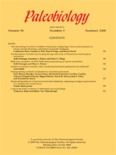
PALEOBIOLOGY
Illuminating the Path from Ancient Ecosystems to Modern SciencePALEOBIOLOGY, published by Cambridge University Press, is a premier, peer-reviewed journal that stands at the forefront of research in paleontological sciences. With a robust commitment to advancing the study of the interactions between ancient life forms and their environments, the journal has established itself as a vital resource for researchers, professionals, and students in the fields of paleontology, ecology, and evolutionary biology. Spanning from 1975 to 2024, it boasts an impressive Q1 ranking in several categories, including Agricultural and Biological Sciences, Ecology, and Paleontology, indicative of its high impact and relevance in shaping contemporary scientific discourse. While the journal is not open access, it offers a variety of subscription and access options, ensuring broad distribution and visibility of published research. As a leader in its discipline, PALEOBIOLOGY aims to facilitate a deeper understanding of our planet's biological history, making it an essential publication for anyone interested in the dynamics of life across geological time.
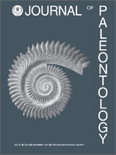
JOURNAL OF PALEONTOLOGY
Bridging Past and Present Through PaleontologyJOURNAL OF PALEONTOLOGY, published by Cambridge University Press, is a leading scholarly journal dedicated to the field of paleontology, featuring a broad scope that covers fossil studies, evolutionary biology, and earth history. With an ISSN of 0022-3360 and an E-ISSN of 1937-2337, this esteemed journal serves as an essential platform for researchers, professionals, and students to disseminate cutting-edge research findings and insights in paleontological science. The journal holds a significant position within its category, ranking Q2 in the 2023 quartiles and achieving a Scopus rank of #51 out of 113 in Earth and Planetary Sciences – Paleontology, placing it in the 55th percentile of its field. Although it does not currently offer open access options, JOURNAL OF PALEONTOLOGY has been a critical contributor to advancing knowledge from its inception in 1979 through to 2024. Its dedication to rigorous research ensures it remains an indispensable resource for those vested in the understanding of ancient life and ecosystems.
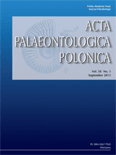
ACTA PALAEONTOLOGICA POLONICA
Illuminating the Path of Life Through TimeACTA PALAEONTOLOGICA POLONICA is a leading scholarly journal in the field of paleontology, published by the Institute of Paleobiology, Polish Academy of Sciences. With its open access model established since 1956, the journal ensures that vital research related to Earth's history and the evolution of life is freely accessible to a global audience. Based in Warsaw, Poland, this journal has garnered a respectable impact within the academic community, currently positioned in the Q2 quartile of its field and ranking #47 out of 113 in Scopus for Earth and Planetary Sciences, reflecting its significance in advancing paleontological research. Covering a wide range of topics related to fossil studies and evolutionary biology, ACTA PALAEONTOLOGICA POLONICA serves as a crucial platform for researchers, professionals, and students alike, encouraging the dissemination of innovative ideas and discussions that contribute to our understanding of past life on Earth. As it continues to publish high-quality articles through to 2024 and beyond, this journal remains integral to the ongoing discourse in paleontological sciences.
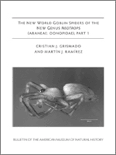
BULLETIN OF THE AMERICAN MUSEUM OF NATURAL HISTORY
Driving ecological discovery with peer-reviewed insights.BULLETIN OF THE AMERICAN MUSEUM OF NATURAL HISTORY, published by the American Museum of Natural History, represents a cornerstone of scholarly communication in the fields of Agricultural and Biological Sciences and Ecology. With an impressive impact factor highlighted by its Q1 quartile rankings in both categories, the journal publishes high-quality, peer-reviewed research that significantly contributes to the understanding of natural history. Researchers will find this journal indispensable as it covers a diverse range of topics, providing insights that drive ecological research and biological discovery forward. Although not open access, the Bulletin is widely available through institutional subscriptions, making it accessible to both established professionals and students eager to stay informed about the latest advancements in the field. Its commitment to advancing knowledge from 1996 to the present ensures that it remains relevant and highly regarded within the scientific community.

Fossil Record
Exploring the Depths of Time Through FossilsFossil Record is a prestigious open access journal pioneering the field of paleontology, published by Pensoft Publishers in Germany. Since its inception in 1998, it has provided a vital platform for the dissemination of groundbreaking research that advances our understanding of ancient life and environmental change through time. Holding an impressive Q2 quartile ranking in the field and securing a notable position among the top 73rd percentile of paleontological journals, Fossil Record ranks #31 out of 113 in the Scopus classification of Earth and Planetary Sciences. With a commitment to quality and accessibility, the journal not only encourages critical dialogue among researchers, professionals, and students but also promotes the sharing of knowledge worldwide. Explore its comprehensive repository of articles to stay abreast of the latest findings that shape our understanding of the planet’s history.
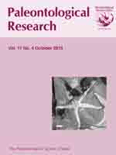
PALEONTOLOGICAL RESEARCH
Unveiling Earth's Ancient Secrets.PALEONTOLOGICAL RESEARCH, published by the PALAEONTOLOGICAL SOCIETY OF JAPAN, is a prominent peer-reviewed journal that addresses key developments in the field of paleontology, ecology, and evolutionary biology. With an ISSN of 1342-8144, this journal has established itself as a vital resource for researchers and professionals who seek to explore the intricate history of life on Earth, integrating insights into evolutionary dynamics and ecological frameworks. Operating since 1997 and with content converging up to 2023, PALEONTOLOGICAL RESEARCH occupies a notable position, ranked in the second quartile within both Ecology, Evolution, Behavior and Systematics and Paleontology categories. While it is not an open-access journal, its rich repository of studies significantly contributes to the academic community. Researchers and students engaged in the exploration of ancient ecosystems and their implications for current biodiversity are sure to find valuable insights within its pages, reinforcing the journal's importance as a leading platform for disseminating paleontological knowledge in Japan and beyond.

BOLLETTINO DELLA SOCIETA PALEONTOLOGICA ITALIANA
Advancing Insights into Paleontological WondersBOLLETTINO DELLA SOCIETA PALEONTOLOGICA ITALIANA is a prestigious journal dedicated to the field of paleontology, published by the SOCIETA PALEONTOLOGICA ITALIANA. Established in 1979, this journal has played a pivotal role in disseminating significant research findings and scholarly articles that enhance our understanding of Earth's biological history. With a proud history of publication stretching from 1979 to 2024, the journal maintains a strong reputation, currently holding a Q2 ranking in Paleontology, reflecting its influence and caliber within the scientific community. Additionally, it is ranked #49 out of 113 in the Earth and Planetary Sciences category by Scopus, placing it in the 57th percentile of its field. While not an open-access journal, it provides critical insights and findings valuable to researchers, professionals, and students alike, fostering a deeper appreciation for paleontological studies. Located in Modena, Italy, the journal continues to be a key resource for advancing knowledge in paleontology, making it an essential read for anyone committed to this fascinating scientific discipline.

PALEONTOLOGICAL JOURNAL
Where Paleontology Meets Innovation.The PALEONTOLOGICAL JOURNAL, published by PLEIADES PUBLISHING INC, is a premier platform for the dissemination of research in the field of paleontology. With an ISSN of 0031-0301 and E-ISSN 1555-6174, this journal serves the academic community by providing insights into fossil studies, evolutionary biology, and the historical narrative of life on Earth. Despite being categorized in the Q3 quartile for 2023 and currently holding a Scopus rank of #84 out of 113 in the Earth and Planetary Sciences- Paleontology category, it remains a valuable resource for researchers and practitioners. The journal's coverage spans from 1990 to 2024, offering a comprehensive historical perspective while also addressing contemporary issues in paleological research. Scholars and students alike benefit from its rigorous peer-reviewed articles and the opportunity to access vital knowledge in the ever-evolving field of paleontology.

PALAEONTOGRAPHICA ABTEILUNG A-PALAOZOOLOGIE-STRATIGRAPHIE
Advancing Knowledge: Pioneering Research in Paleobiology and StratigraphyPalaeontographica Abteilung A-Palaozoologie-Stratigraphie is a prominent academic journal that serves as a vital resource for researchers in the fields of Paleontology and Stratigraphy. Published by E Schweizerbart'sche Verlagsbuchhandlung in Germany, this journal has been instrumental in disseminating cutting-edge research from 1996 to 2024. With an established reputation highlighted by its Q3 ranking in both Paleontology and Stratigraphy, it ranks 26th among 113 journals in Paleontology and 15th among 55 in Stratigraphy, showcasing its significance within the scientific community. Although it does not currently offer open access, the journal provides an invaluable platform for the exchange of innovative ideas and findings in paleobiological and stratigraphic studies. As such, Palaeontographica continues to attract contributions from leading academics, making it an indispensable publication for professionals and students alike who are eager to advance their understanding of Earth's historical biological and geological patterns.